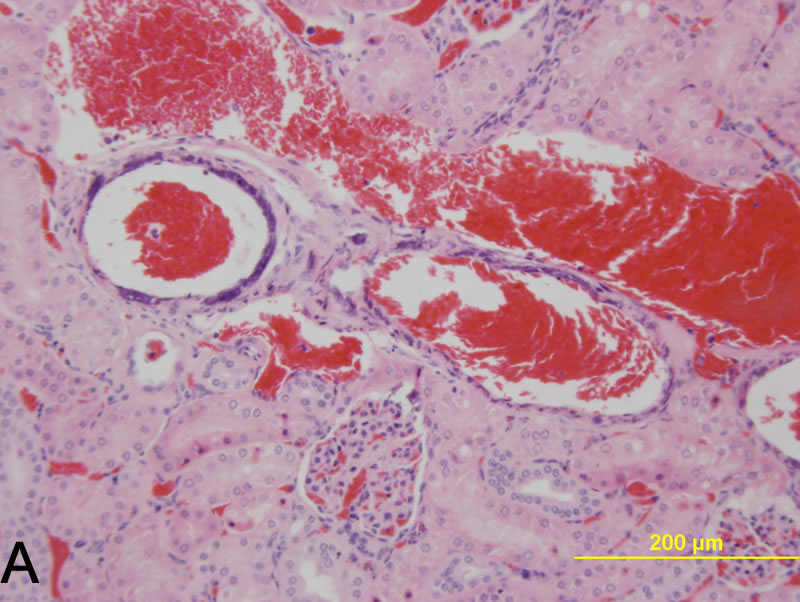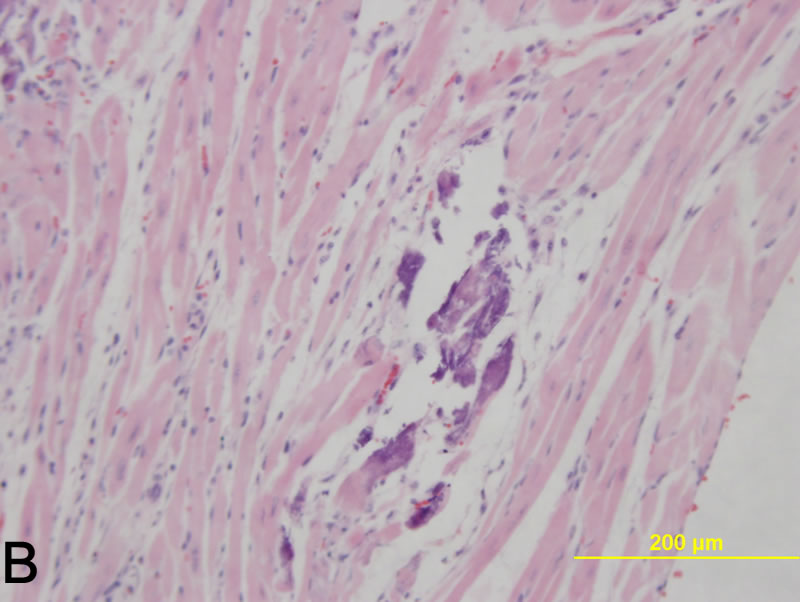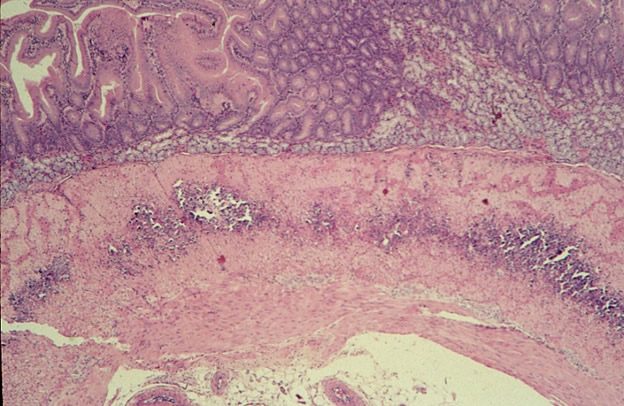Etiology: The cause of metastatic mineralization is not known, but may be due to an inappropriate dietary mineral balance [1].
Incidence: Metastatic mineralization is infrequently seen in guinea pigs over one year of age.
Clinical Signs: Clinical signs are non-specific and may include alopecia, muscle stiffness and unthriftiness.
Pathology: Mineral deposits accumulate most commonly within the kidney [here within the smooth muscle of the vasculature (A)], but can also be seen within the periarticular soft tissues, liver, heart (B) and GI tract (photo, far right).
Diagnosis: Mineralization of smooth and cardiac muscle and kidney tissues are seen on histology.



1. The Laboratory Rabbit, Guinea Pig, Hamster, And Other Rodents. 1 ed2012, 225 Wyman Street, Waltham, MA 02451: Elsevier.